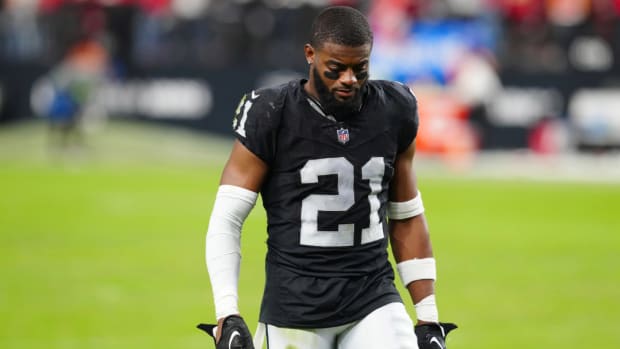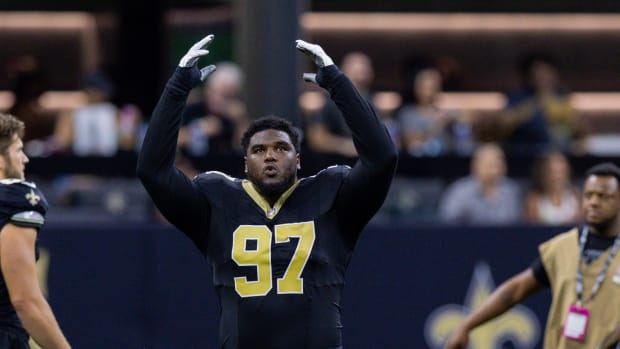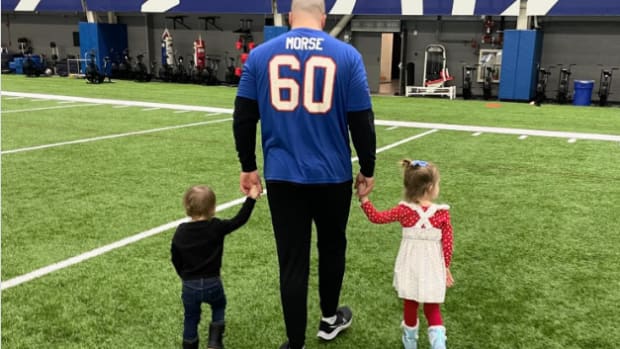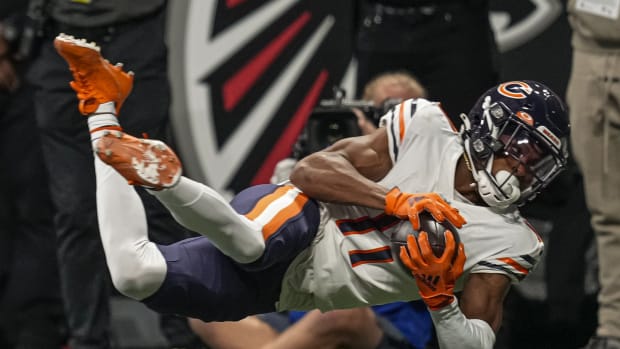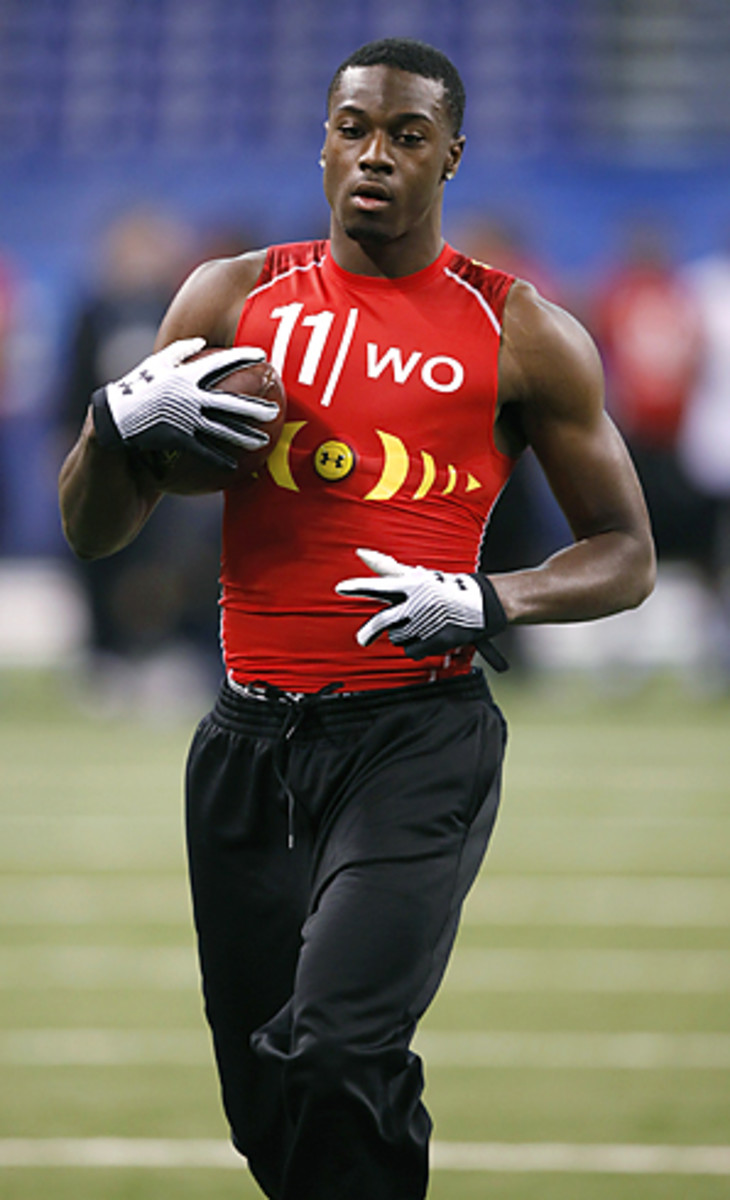
NFL combine report: Wideouts
More than 40 receivers worked out for NFL decision-makers Sunday on the turf at Lucas Oil Stadium. In the end, most lived up to, or exceeded, expectations as scouts walked away happy. It wasn't an especially fast group of wideouts, yet a steady and consistent class. Here are the receivers risers and sliders:
Julio Jones/Alabama: After running 40 times in the low-4.4 area, Jones displayed himself as a fluid and natural wide receiver. He possesses a gliding style and effortlessly got in and out of routes with terrific quickness. Jones also showcased dependable hands with the ability to snatch the ball from the air. He solidified himself as a midway pick for Round 1.
A.J. Green/Georgia: Not to be outdone, Green also impressed NFL decision-makers. Green averaged 40s in the upper-4.4s on his two sprints. He was outstanding during the pass-catching drills, running exceptionally quick routes and catching everything thrown to him. Green has established himself as a top-five player.
Ricardo Lockette/Fort Valley State: Lockette was one of the small school players we highlighted in the runup to the combine, and he did not disappoint. He was the fastest of any receiver, clocking 4.29. Lockette proved much more than just a sprinter, displaying a complete game during the session. Lockette caught the ball well, ran sharp routes, and most importantly, brought his track speed to the drills, while exhibiting a great burst every time he stepped to the line.
Randall Cobb/Kentucky: Cobb looked exceptional in all areas. He showed strong hands, snatching away fastballs thrown by Ryan Mallett and Nathan Enderle. Cobb ran crisp, precise routes and showed an explosive nature to his game. Factor in he was a playmaking return specialist in college and Cobb has moved himself into the second round.
Jerrel Jernigan/Troy: Jernigan's 40 times were not as fast as scouts had hoped (mid-4.4s), yet his game was as complete as all expected. Jernigan showed a terrific burst during drills, ran sharp routes and displayed consistent hands. His ability to make the deep reception while running full speed was impressive.
Gregory Salas/Hawaii: Salas did not run any blinding 40s, struggling to get under 4.5. However, he did showcase himself as one of the best underneath receivers in the draft. Salas caught the ball exceptionally well, displaying soft and strong hands. His routes were scissor-sharp and Salas looked very athletic on the field. He could be one of the real sleepers in all the draft.
Aldrick Robinson/SMU: Robinson started the day by running 4.38, one of only a handful of sub-4.4 wideouts. He looked fast in the drills, effortlessly catching the deep pass and showed consistent hands -- which was a problem in college.
Darvin Adams/Auburn: Adams was one of those receivers who did not run fast, but let his pass-catching skills do the talking. He practiced much faster than his mid-4.5 40 times. He caught the deep ball well, ran solid routes and easily adjusted to the few errant tosses thrown his way.
Owen Spencer/North Carolina State: Spencer was solid, from start to finish. He ran well, timing in the mid 4.4s and looked quick in drills. He showed a burst running to the long pass and caught the ball well all day.
Torrey Smith/Maryland: Smith was impressive in the sprints, running both 40s around 4.35. He also caught the long pass well, yet did nothing to prove he's anything other than a one-dimensional receiver. Smith struggled with his routes, dropped a number of passes and looked very ordinary when asked to do anything other than run in a straight line.
Andre Holes/Hillsdale: It was a tough day for the small-school product. Holmes is a long strider who shows limited quickness in his game and no burst. He struggled running routes and dropped a number of passes.
Notes: The old adage of "playing speed" versus "timed speed" was on display when the receivers worked out. Edmund Gates of Abilene Christian ran a pair of swift 40s, clocking under 4.4. Meanwhile, Jeremy Kerley of TCU struggled to get under 4.6, while Vincent Brown of San Diego State was one-tenth of a second slower. Yet when it was time to catch the football, it was Kerley and Brown who looked as though they had the 4.4 speed ... while Gates pace slowed significantly.

































